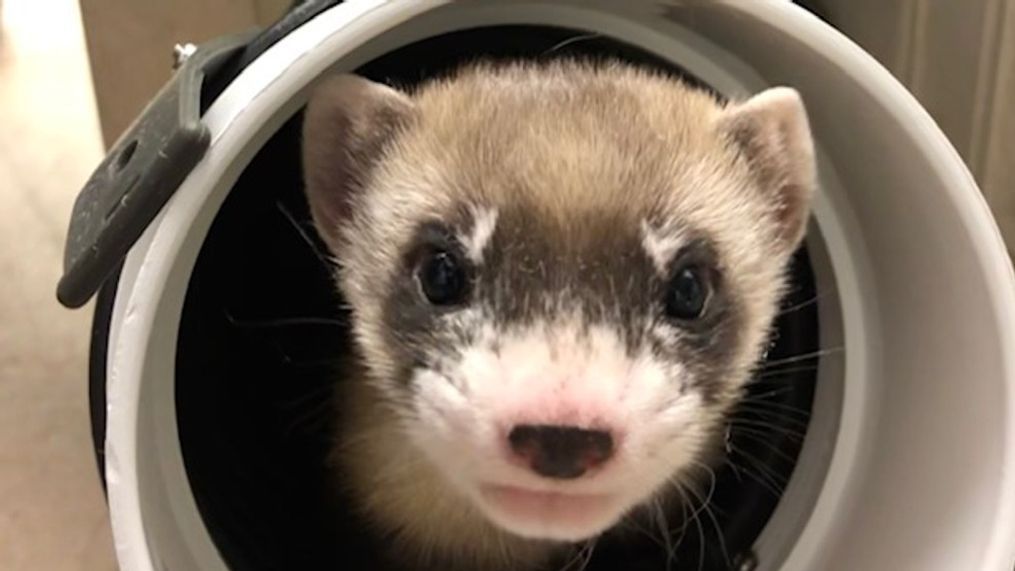Meet the first-ever clone of a US endangered species, black-footed ferret Elizabeth Ann
Elizabeth Ann, the first cloned black-footed ferret and first-ever cloned U.S. endangered species, at 50-days old.
Credit: USFWS National Black-footed Ferret Conservation Center
ARLINGTON, Va. (WJLA) — Elizabeth Ann is only about 11 weeks old, but her story began more than 30 years ago.
The black-footed ferret kit is the first cloned member of her species, and also the first-ever clone of a U.S. endangered species.
The U.S. Fish & Wildlife Service introduced her to the world Thursday. They say her birth gives them hope for introducing more genetic diversity into the very small black-footed ferret population.
In 1981,the Service says, a Wyoming rancher discovered a small population of black-footed ferrets on his land. Before that, they were thought to be extinct.
They were captured by the Wyoming Game & Fish Department and a captive breeding program began to try to recover the species. But the gene pool of that program was very small, and limited genetic diversity "makes it extremely difficult to fully recover a species," the Service says.
Up until Elizabeth Ann's birth, all living black-footed ferrets had descended from just seven individuals. The cells used to create Elizabeth Ann came from "Willa," who was among those last wild ferrets.
But Willa "has no living descendants and is therefore not one of the seven founders," the Service says. "The Wyoming Game & Fish Department had the foresight to preserve her genes and sent tissue samples from Willa to San Diego Zoo Global’s Frozen Zoo in 1988."
Those preserved cells made Elizabeth Ann's birth possible.
“San Diego Zoo Global’s Frozen Zoo was created more than 40 years ago with the hope that it would provide solutions to future conservation challenges,” said Oliver Ryder, the Director of Conservation Genetics for San Diego Zoo Global. “We are delighted that we have been able to cryobank and, years later, provide viable cell cultures for this groundbreaking project.”
Elizabeth Ann and her surrogate mother now live at theNational Black-footed Ferret Conservation Center in Colorado.The team there is working to produce more clones in the coming months.
Follow the center on Facebook HERE for updates.




